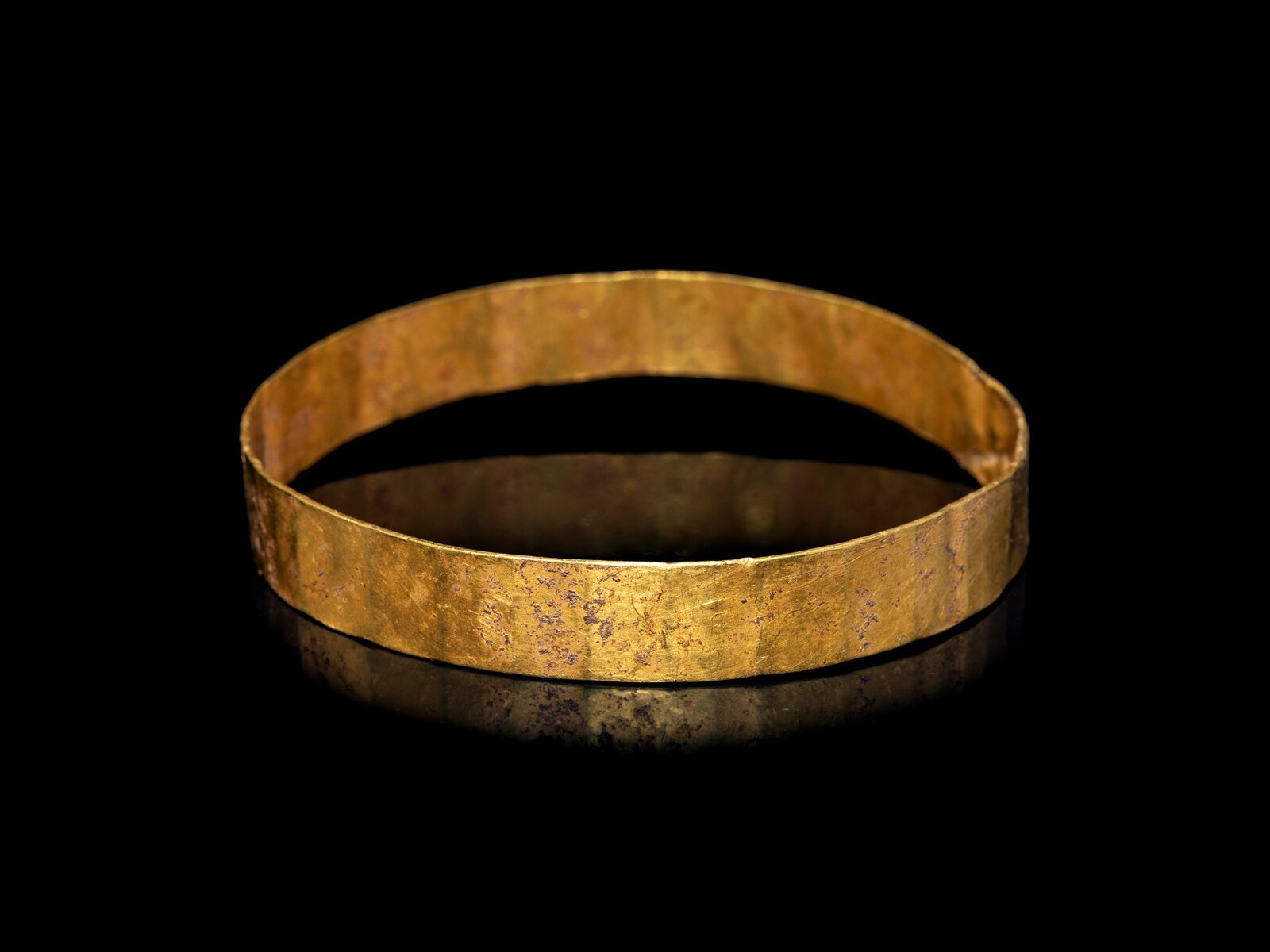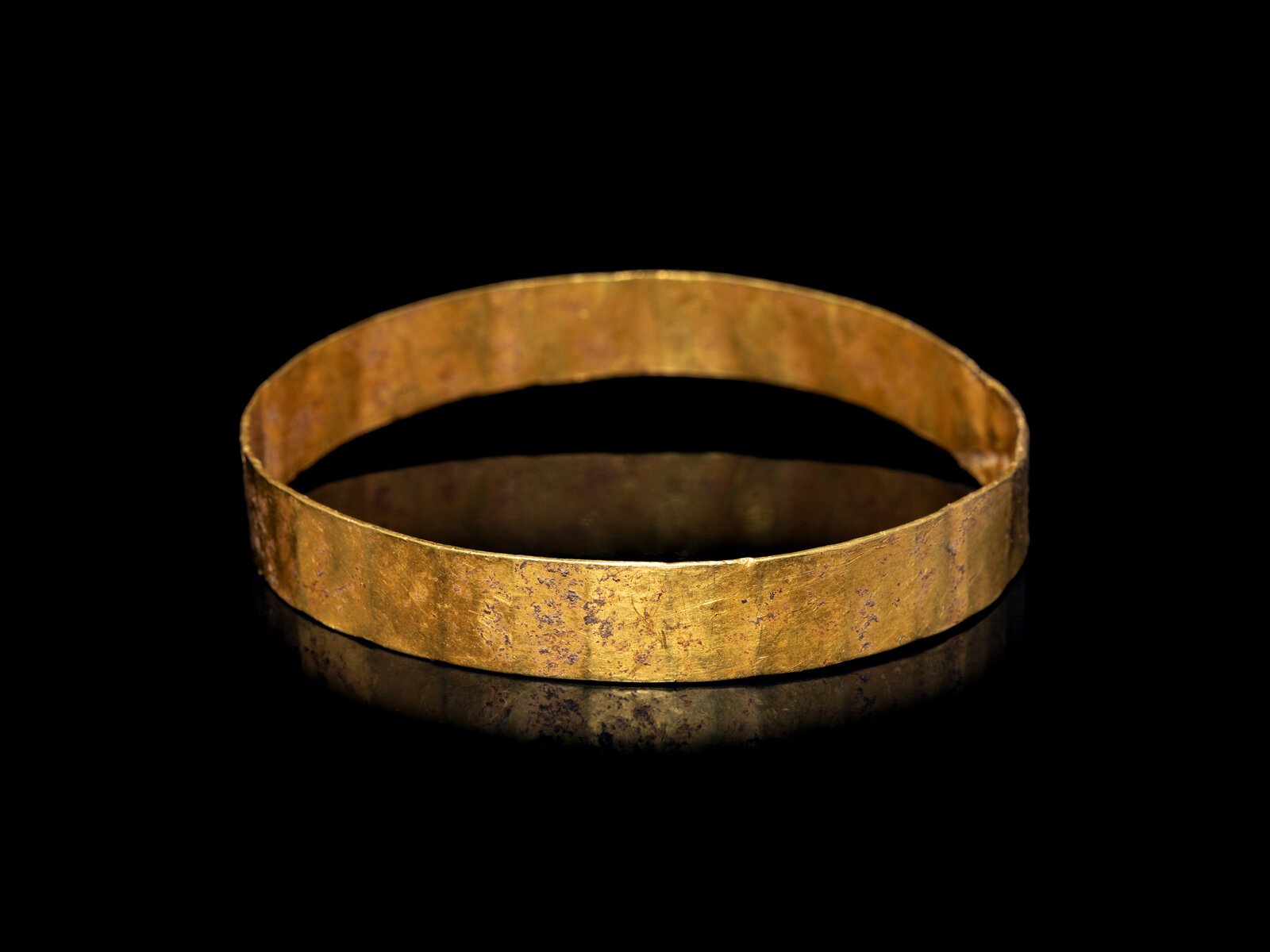Anatolian Gold Armlet or Bracelet
This Anatolian Gold Hammered-band Bracelet or Armlet, Circa 500 B.C.
Golden bracelets and armlets first make an appearance during the Bronze age together with other examples in gilded bronze and silver. From various statues and reliefs it is clear that many men wore these gold bracelets and armlets. Regarding armlets there are many depictions of them being work by gods and men, usually on Assyrian reliefs. However on various Neo-Hittite and roman reliefs there are numerous depictions of them being worn by women as well, although these typically date to around the 5th-4th century BC. C.F: Bingöl, F. R. Işik, and Anadolu Medeniyetleri Müzesi. 1999. Ancient Jewellery : Museum of Anatolian Civilizations. Ankara: General Directorate of Monuments and Museums.
This Anatolian Gold Hammered-band Bracelet or Armlet, Circa 500 B.C.
Golden bracelets and armlets first make an appearance during the Bronze age together with other examples in gilded bronze and silver. From various statues and reliefs it is clear that many men wore these gold bracelets and armlets. Regarding armlets there are many depictions of them being work by gods and men, usually on Assyrian reliefs. However on various Neo-Hittite and roman reliefs there are numerous depictions of them being worn by women as well, although these typically date to around the 5th-4th century BC. C.F: Bingöl, F. R. Işik, and Anadolu Medeniyetleri Müzesi. 1999. Ancient Jewellery : Museum of Anatolian Civilizations. Ankara: General Directorate of Monuments and Museums.
This Anatolian Gold Hammered-band Bracelet or Armlet, Circa 500 B.C.
Golden bracelets and armlets first make an appearance during the Bronze age together with other examples in gilded bronze and silver. From various statues and reliefs it is clear that many men wore these gold bracelets and armlets. Regarding armlets there are many depictions of them being work by gods and men, usually on Assyrian reliefs. However on various Neo-Hittite and roman reliefs there are numerous depictions of them being worn by women as well, although these typically date to around the 5th-4th century BC. C.F: Bingöl, F. R. Işik, and Anadolu Medeniyetleri Müzesi. 1999. Ancient Jewellery : Museum of Anatolian Civilizations. Ankara: General Directorate of Monuments and Museums.
Weight: 1.0225 Ounces
Diameter: 2 7/8 Inches or 7.3 cm
Provenance: Freeman and Hideman: Sale 1343 - Antiquities and Ancient Art: Lot 223, Private Collector, Fortuna Fine Arts, New York, prior to 1990
Published:
J. Ogden, A Golden Past: Jewelry from the Ancient World (Catalogue), 1990, p. 37, no. 176.
See Similar:
See similar piece in Bingöl, F. R. Işik, and Anadolu Medeniyetleri Müzesi. 1999. Ancient Jewellery : Museum of Anatolian Civilizations. Ankara: General Directorate of Monuments and Museums: Pg 51, Cat. no 11 & 12. As both has similar indentations and styles even though they are wreaths.
Similar pieces are also found within the Museum of Anatolian Civilizations in Turkey
Similar pieces are also found within the Museum of Anatolian Civilizations in Ankara

